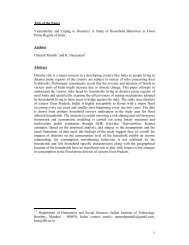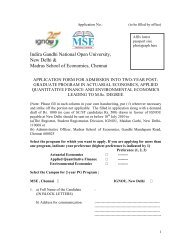Accounting for India's Forest Wealth - Madras School of Economics
Accounting for India's Forest Wealth - Madras School of Economics
Accounting for India's Forest Wealth - Madras School of Economics
- No tags were found...
You also want an ePaper? Increase the reach of your titles
YUMPU automatically turns print PDFs into web optimized ePapers that Google loves.
March 1, 1986 with reference to specified Chapters <strong>of</strong> the Central ExciseTariff Act, 1985. At first, the coverage was limited to 37 out <strong>of</strong> 91Chapters. From March 1, 1987, all commodities except petroleumproducts, textiles, tobacco, cinematographic films and matches werecovered. In the MODVAT system, early in the nineties, full rebate on theexcise tax paid on capital goods was allowed instead <strong>of</strong> setting up asystem <strong>of</strong> annual depreciation related deductions. With effect from 1995-96, the entire manufacturing chain was brought under MODVAT.The central government changed MODVAT to CENVAT in 1996-97. The CENVAT covers value added in the case <strong>of</strong> production and sale <strong>of</strong>goods up to the stage <strong>of</strong> „manufacturing‟. Compared to MODVAT,CENVAT had fewer rates. The taxation space up to the value added inthe production <strong>of</strong> goods is common between the centre and states. Whilethe tax structure was thus simplified, continuation <strong>of</strong> several surchargesand cesses continued to complicate the system. These are listed below:a. Special Excise Duty,b. National Calamity Contingent Duty,c. Education Cess,d. Secondary and Higher Education,e. Cess on Motor Spirit,f. Cess on High Speed Diesel Oil,g. Surcharge on Motor Spirit, andh. Surcharge on Pan Masala and Tobacco Products.Towards Taxing the Value Added: From Sales Tax to State VATState taxes include state sales taxes, the Central Sales Tax (CST)assigned by the central government to the states, motor vehicle tax,state excise duties, entertainment taxes. The structure <strong>of</strong> sales tax, priorto re<strong>for</strong>ms undertaken in late nineties was characterized by high taxrates, multiplicity <strong>of</strong> tax rate and exemptions, lack <strong>of</strong> uni<strong>for</strong>mity indefining the tax base across states, large number incentives, andcascading <strong>of</strong> taxes. During re<strong>for</strong>ms <strong>of</strong> sales taxes prior to the introduction9


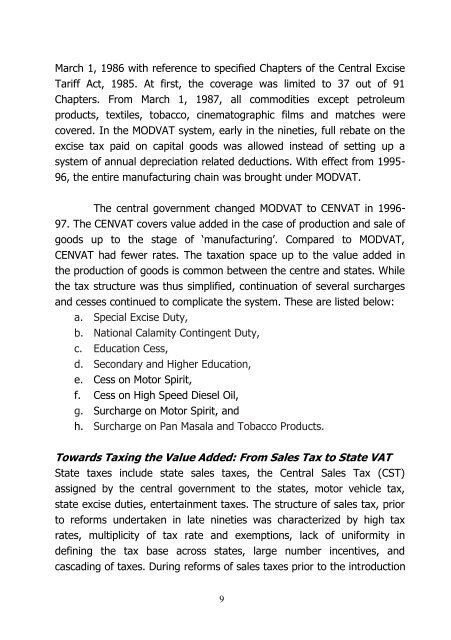
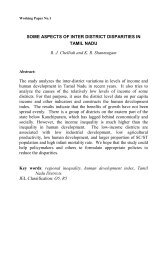

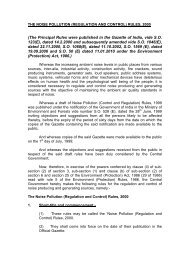
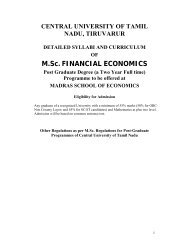
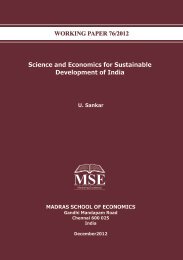
![Curriculum Vitae [pdf] - Madras School of Economics](https://img.yumpu.com/49878970/1/190x245/curriculum-vitae-pdf-madras-school-of-economics.jpg?quality=85)
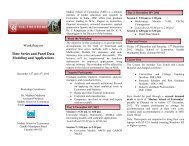
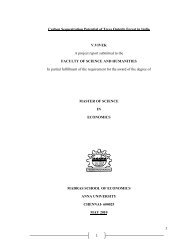
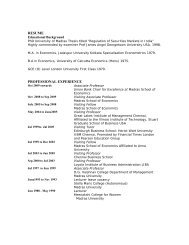
![Curriculum Vitae [pdf] - Madras School of Economics](https://img.yumpu.com/48715201/1/184x260/curriculum-vitae-pdf-madras-school-of-economics.jpg?quality=85)
